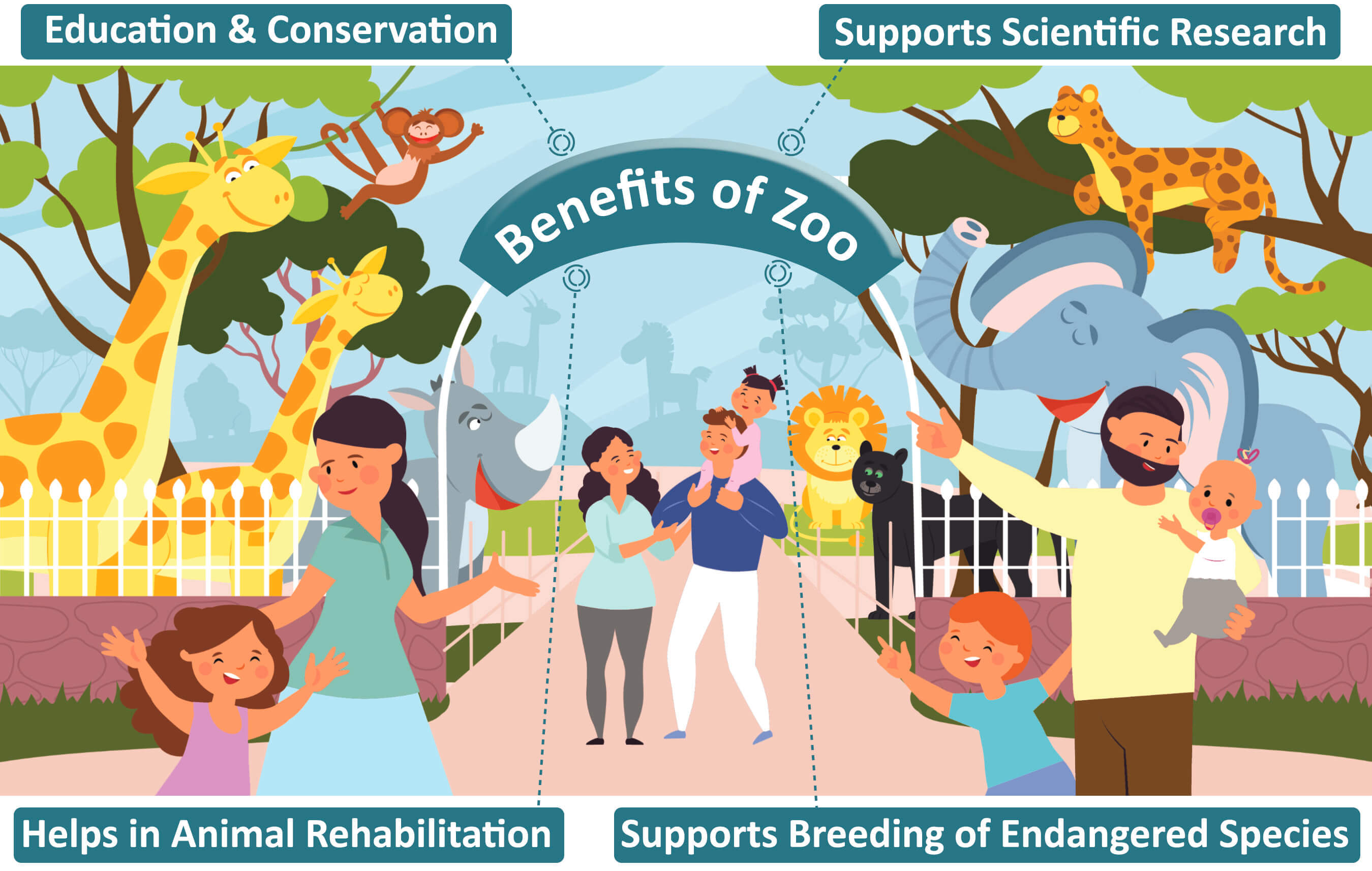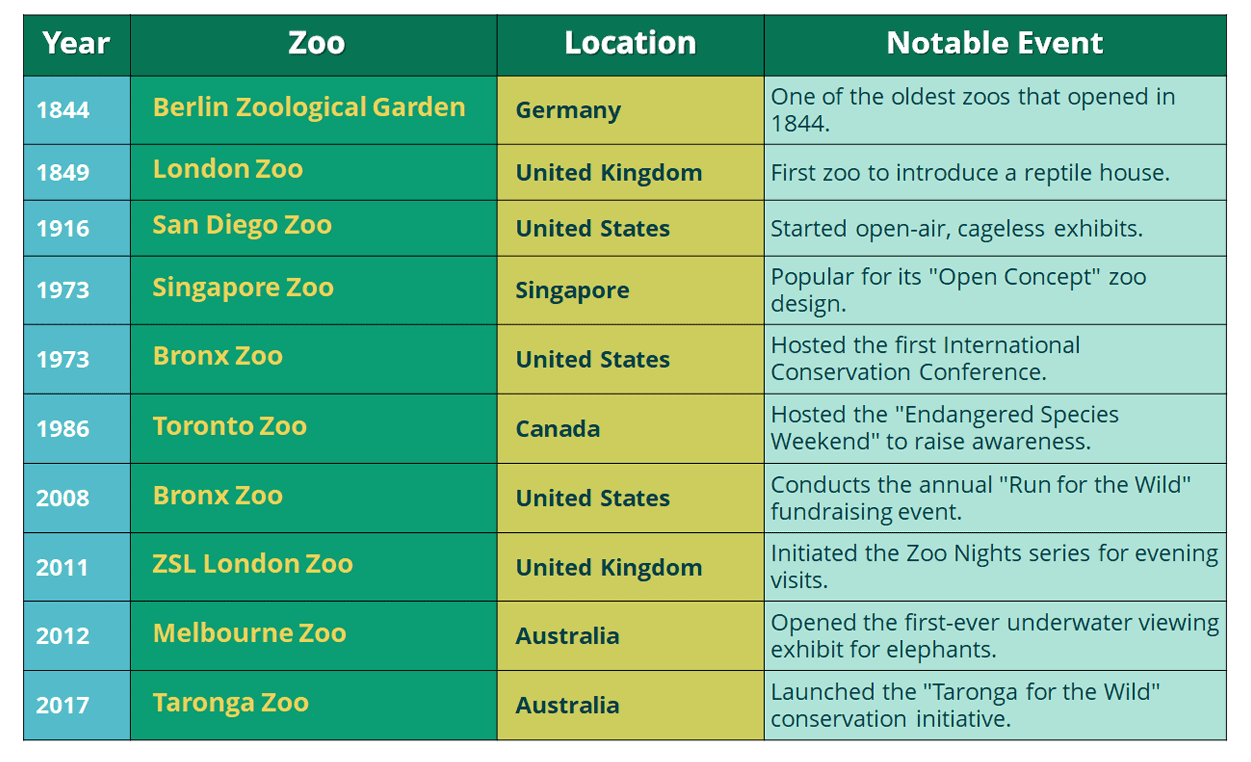Essay on Zoo – Introduction
Zoos across the globe have witnessed some truly fascinating events over the years. One such event occurred in 1988 at the San Francisco Zoo when Koko, a gorilla, used sign language to communicate with her caregivers. Similarly, the birth of an endangered white rhinoceros in the Toronto Zoo back in 2016 brought joy to everyone. Zoos are not just places to visit; they are an experience that offers a world of excitement and nostalgia for people of all ages. For parents, it’s a chance to share the wonders of the animal kingdom with their children while kids enjoy the playful antics of the animals. Every family has a story to tell about their zoo visit, where they witnessed a lion’s roar for the first time or were mesmerized by the colorful hues of a peacock’s feathers. In this essay on zoo, we will discuss the importance of zoos, their role in education and conservation efforts, as well as the ethical implications of keeping wild animals in captivity.
Table of Contents
- Introduction
- Purpose of Zoos
- Why do People Visit Zoos?
- What Types of Animals are in Zoos?
- Benefits of Zoos
- Problems with Zoos
- Are Zoos Cruel to Animals?
- Use of Technology in Zoos
- Future of Zoos
- Notable Events at Zoos
- Infographics on Zoo
Purpose of Zoos
Zoos are places where you can see and learn about many different animals. Zoos not only offer fun, but they also teach us the importance of caring for animals and the environment. Some zoos have special provisions for endangered animals. This means that these zoos keep such animals healthy and safe, especially when only a few of them are left in the wild.
Why do People Visit Zoos?
There are many reasons why people visit zoos. Some people visit zoos to see animals that they would not normally have the opportunity to see, such as lions, tigers, and elephants. Others visit zoos to learn about the animals and their habitats. Still, others visit zoos for the entertainment value or because they have fond memories of visiting zoos as children. Whatever the reason, there are many benefits to visiting zoos.
What Types of Animals are in Zoos?
Zoos house a variety of animals, from the common to the exotic. Mammals such as lions, tigers, and bears are popular attractions, as are reptiles like snakes and crocodiles. Birds like parrots and penguins are also often found in zoos. Some zoos also have unusual animals like kangaroos, koalas, and wallabies. These animals come from Australia and are rarely seen in other parts of the world. However, they are available in some zoos in North America and Europe.
Benefits of Zoo
There are many benefits of zoos that often go unnoticed. Here are a few of them:
1. Education and Conservation
Zoos play an important role in educating people of all ages about wild animals and their natural habitats. They also work to conserve endangered species and protect them from extinction.
2. Fun and Memorable Experiences
Zoos offer a chance to see amazing creatures up close and personal, which is an experience that few people ever get in their lifetimes. A trip to the zoo is sure to be a memorable one for people of all ages.
3. Provides a Safe Haven for Displaced Animals
Zoos keep animals safe when they lose their natural homes because of human activity. By keeping these animals safe in captivity, zoos help ensure they will not disappear entirely from the planet.
4. Helps in Animal Rehabilitation
Zoos also help rehabilitate injured or sick animals. They team up with animal rehab centers and other groups to help sick or injured animals that cannot survive in the wild.
5. Supports Scientific Research
Zoos allow scientists to research various species. These research studies aim to learn more about animal behavior and biology.
6. Supports Breeding of Endangered Species
Zoos help endangered species by breeding and protecting them from extinction. Once these animals reach a certain age and are healthy, they are released back into the wild.
7. Involves Local Communities in Conservation Efforts
Zoos often work with local communities to teach them why taking care of wildlife is crucial. They may also offer volunteer and internship opportunities for people who are interested in working with animals.
Problems with Zoos: Why are Zoos Harmful?
There are many problems associated with zoos:
- Animals in some zoos are not treated well. They live in small cages and may not get enough food or water.
- There is a risk of danger to both animals and humans in zoos, as animals may escape from their cages and harm people.
- Some zoos may not provide a comprehensive understanding of animals. Visitors may only see the “cute” side of animals and miss out on learning about their natural habitats and behaviors.
- Zoos usually only care for the popular animals, which means that less popular animals can receive poor treatment.
- Animal rights activists think that humans should not cage animals in zoos.
Are Zoos Cruel to Animals?
Many people believe zoos are cruel to animals because they are confined to small spaces and deprived of their natural habitats. Others argue that zoos provide a necessary service by rescuing endangered species and educating the public about wildlife conservation.
Use of Technology in Zoos
Let’s look at four examples where zoos have used new technologies to take care of animals.
Example 1: San Diego Zoo (United States)
In this zoo, the zookeepers have fitted special devices, similar to fitness trackers, on some animals. These devices assist them in tracking the animals’ movement, heart rate, and other health parameters.
Example 2: Singapore Zoo (Singapore)
The Singapore Zoo has designed natural habitats for animals instead of confining them to cages. These habitats have advanced features that control temperature, humidity, and lighting to mimic the animals’ natural surroundings. As a result, the animals feel happier and more comfortable.
Example 3: London Zoo (United Kingdom)
London Zoo has a system called ZSL Instant Wild. This system allows you to watch live videos of animals in their natural habitats worldwide. You can use a mobile app or go to their website to see these videos.
Example 4: Mumbai Zoo (India)
Also known as Veermata Jijabai Bhosale Udyan, this Zoo has modern vet facilities, X-rays, and ultrasound machines. The zoo also has security cameras and electronic fences to keep both the animals and visitors safe.
Future of Zoos
Zoos may see an increase in the use of Artificial intelligence (AI) technology to create natural habitats for animals and monitor their health, behavior, and well-being in real-time. This will help caretakers to take action immediately if there are any issues. AI can also track animal populations in the wild. Looking to the future, zoos will continue to play an important role in educating the public about wildlife and their habitats. Additionally, zoos will continue to be valuable resources for conservation efforts. As our understanding of animals and their needs grows, so too will our ability to provide them with the best possible care.
Famous Zoos with Notable Events
Here’s a table featuring famous zoos with notable events:
Infographics on Zoo
Final Thoughts – Essay on Zoo
The essay on zoos explains that Zoos are an important part of our society and culture. They provide us with a connection to nature, preserve endangered species, and educate people about animals. Visiting a zoo can be a great way for families to spend time together while learning more about wildlife conservation. By supporting zoos and their efforts, we can help ensure that these valuable resources are around for generations to come. So, next time you are looking for something fun to do on the weekend or during your vacation, consider taking a trip to the local zoo!




